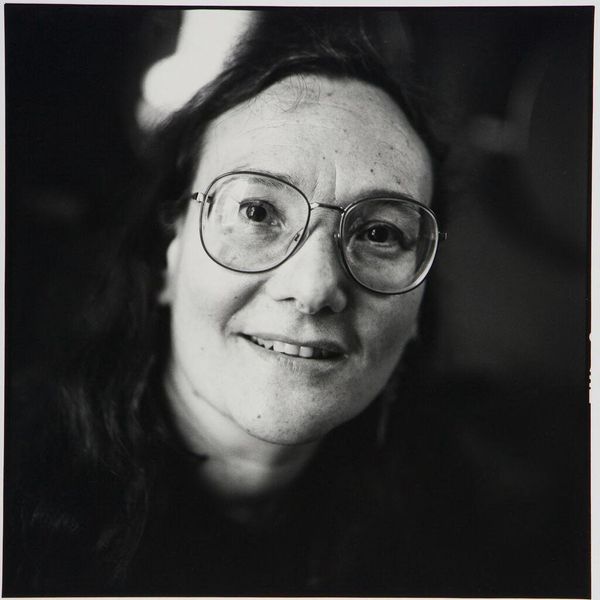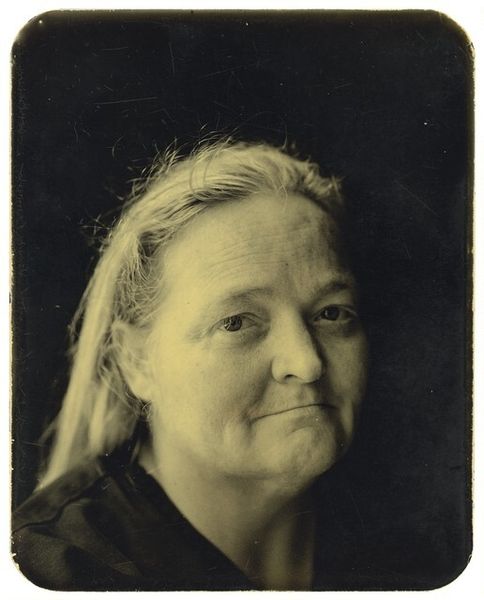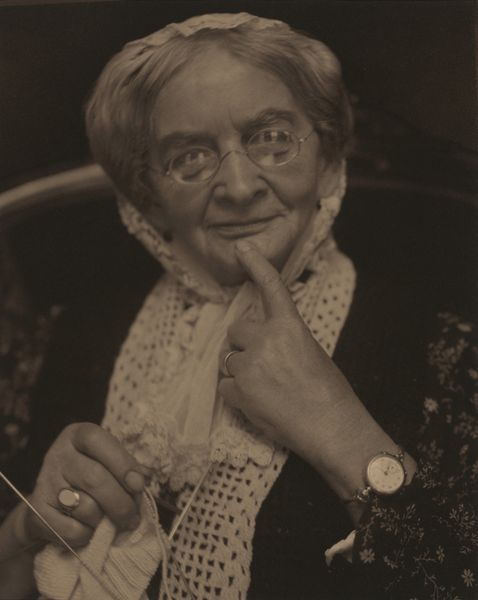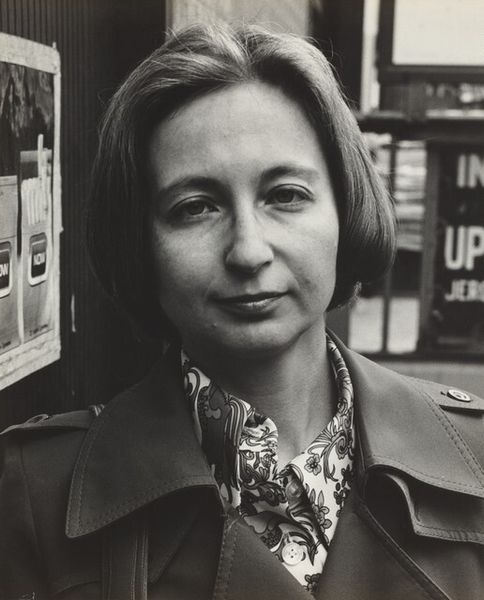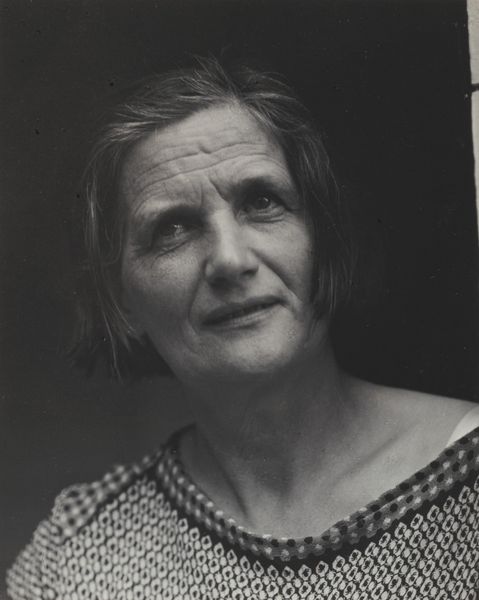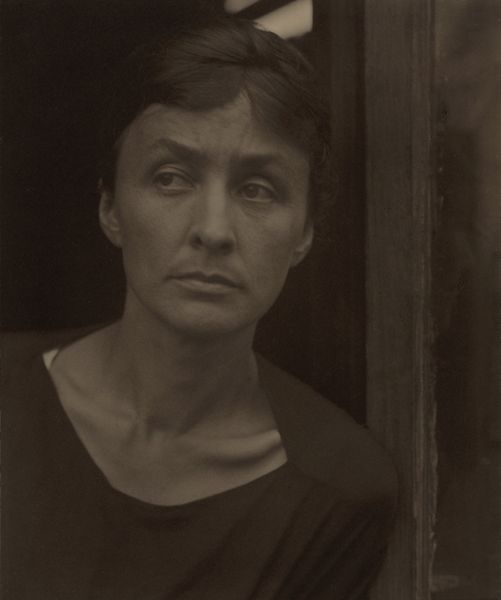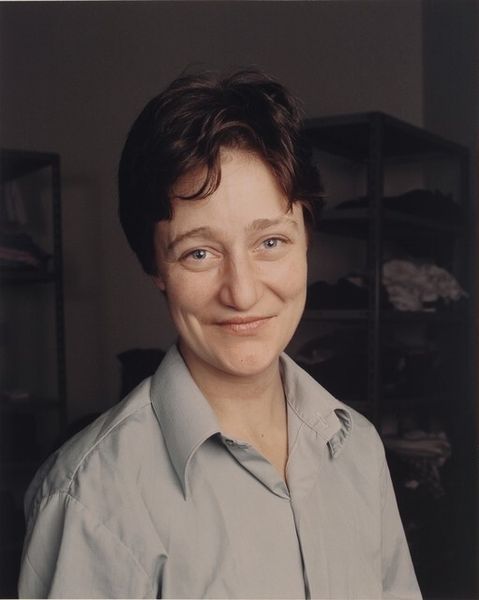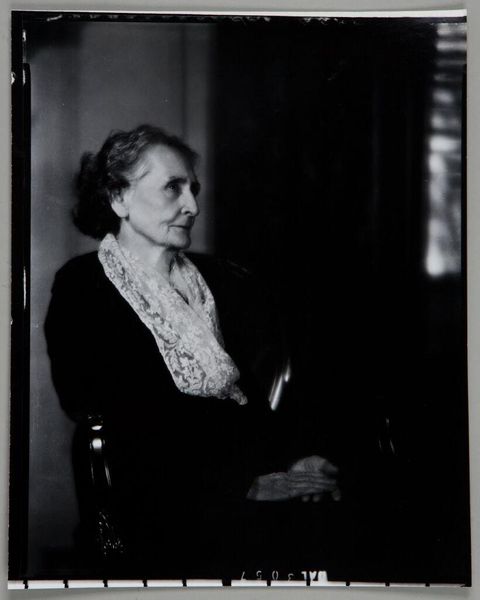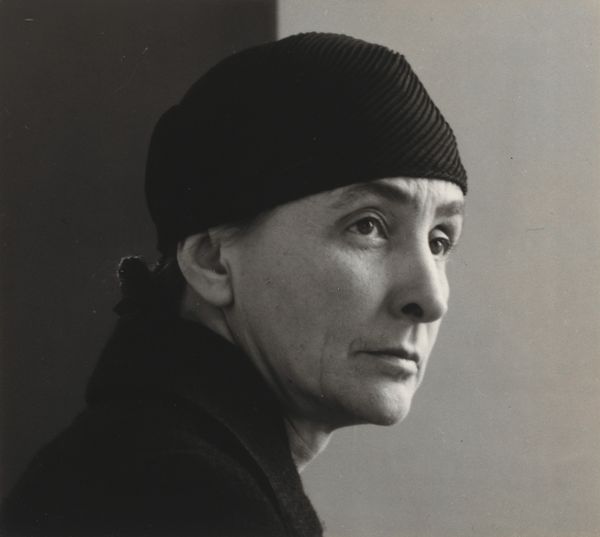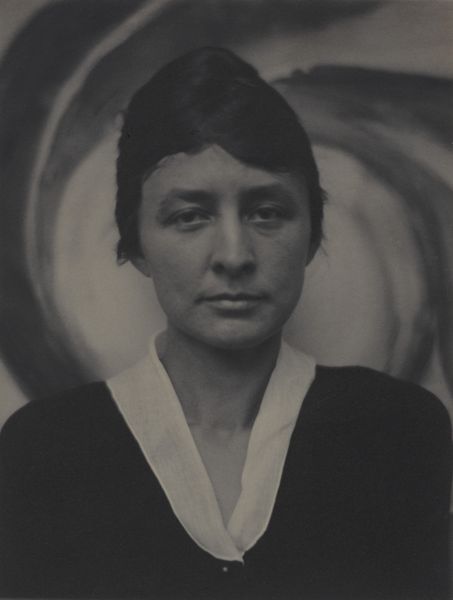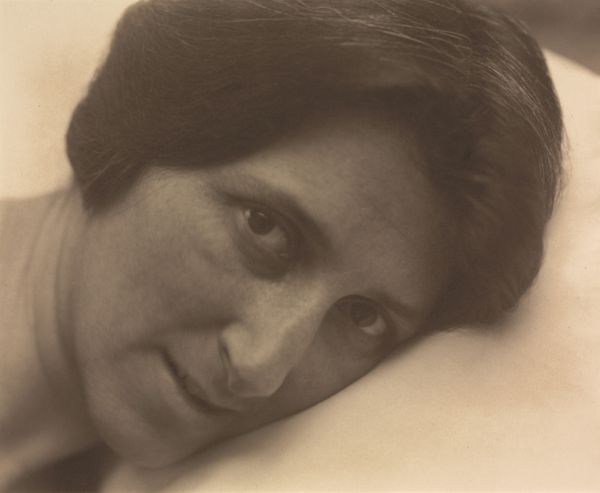
photography, gelatin-silver-print
#
portrait
#
contemporary
#
photography
#
historical photography
#
gelatin-silver-print
#
portrait photography
Dimensions: overall: 45.72 x 60.96 cm (18 x 24 in.)
Copyright: National Gallery of Art: CC0 1.0
Editor: This is Daryl Trivieri’s "Dorothy Vogel (second study)," a gelatin-silver print from 1989. The tones are wonderfully subtle, almost like a memory surfacing. It feels very intimate, seeing this person like this. What's your read on it? Curator: Well, seeing this photograph in the context of late 20th-century art, it reminds me how photography democratized portraiture. It moved away from the exclusive domain of the wealthy, captured in painted portraits, towards a more accessible medium. But what do you know about the subject, Dorothy Vogel? Does her story change how you see the work? Editor: I confess, I don't know much about her. Should I? Curator: Absolutely. Dorothy Vogel and her husband, Herbert, were famed art collectors, but what set them apart was that they were of very modest means. Herbert was a postal worker and Dorothy a librarian. They lived a minimalist lifestyle and used their income to buy art, ultimately amassing an impressive collection of conceptual and minimalist works, which they then donated to the National Gallery. Considering that, does the photograph speak differently to you? Editor: It really does. Knowing she was a librarian gives the photograph an entirely new dimension. There's an intellectual curiosity, maybe even a quiet rebellion, suggested by the setting. The act of donating to the National Gallery is an intriguing form of redistribution, challenging elitist structures within the art world itself. Curator: Precisely! It's a photographic study not just of an individual, but of a social force challenging the established order of who gets to own and access art. Trivieri, in photographing Dorothy, captures this fascinating collision of person and politics. Editor: That really broadens my understanding. It’s incredible how knowing the background transforms the photograph from a simple portrait into a statement on art, class, and accessibility. Curator: Indeed. It prompts us to question who is represented in art, who gets to collect it, and ultimately, who has access to it.
Comments
No comments
Be the first to comment and join the conversation on the ultimate creative platform.
